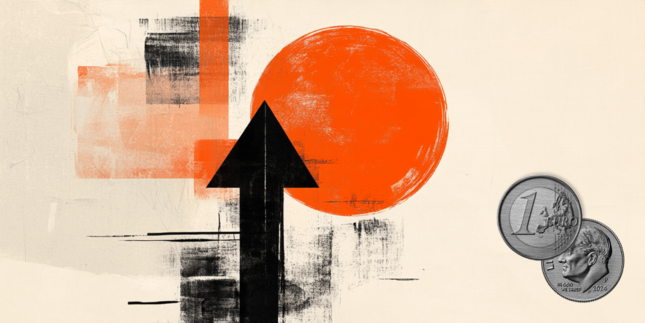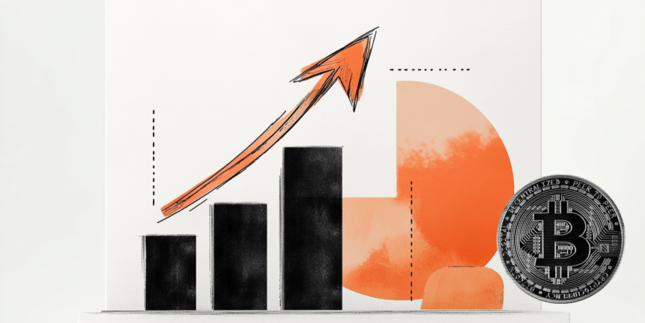Tensions in the Middle East have resurfaced, supporting oil prices. The market is also watching closely the outcome of talks between Donald Trump and Vladimir Putin.
Energy – Geopolitical risks intensify
Oil prices rose yesterday amid rising tensions in the Middle East, continuing the strength seen at the end of last week. ICE Brent settled almost 0.7% higher on the day, moving back above US$71/bbl. Along with US strikes on the Houthis in Yemen, several factors provided support to the market. China unveiled plans to revive consumption, while Chinese retail sales and fixed asset investment growth came in stronger than expected. Output data suggests that domestic apparent oil demand over January and February averaged 14.7m b/d, up 2.4% year on year.
Middle East tensions escalated once again in recent days with US strikes on the Houthis, while the Houthis retaliated by targeting a US aircraft carrier. The Houthis are backed by Iran, which could lead to a broader escalation, particularly with President Trump saying Iran “will be held responsible, and suffer the consequences” if the Houthis continue attacks in the Red Sea. Unsurprisingly, the Trump administration is taking a more hawkish stance against Iran, having tightened oil sanctions since taking office.
Trump is scheduled to talk to President Putin today about a proposed ceasefire. Energy markets will be watching closely for any progress -- particularly whether a potential peace deal might include the resumption of some Russian energy flows. This would be more impactful for natural gas rather than oil, given that the scope to increase natural gas flows is much bigger relative to oil.
European natural gas prices came under pressure yesterday, falling almost 2.5% on the day, amid hopes of a Russia-Ukraine peace deal. Also, the weather forecast in North West Europe is for milder temperatures over the next week. However, EU gas storage continues to tick lower. It’s now a little under 35% full, down from 60% at the same stage last year and below the five-year average of 46%. Speculative longs have become nervous that a potential peace deal between Russia and Ukraine could see the resumption of some Russian pipeline gas into Europe.
Metals – EU to probe aluminium imports
The EU is launching a probe into aluminium imports to protect the bloc’s industry from an expected surge in cheap imports displaced by US tariffs, according to media reports. The European Commission is set to announce the probe on Wednesday. Last week, Donald Trump placed 25% tariffs on all steel and aluminium imports. “The recently announced US tariffs on aluminium are likely to worsen the situation further with a significant threat of trade diversion from multiple destinations,” the document reads.
European aluminium premiums have been falling, while US premiums surged to a record high. This suggests some suppliers to the US are already redirecting sales to Europe to avoid Trump’s tariffs. Europe is dependent on primary aluminium imports. Its aluminium sector was one of the worst affected during the energy crisis, with more than one million tonnes per annum taken offline. Some restarts have begun in Europe, but significant capacity remains offline. Except for Norway and Iceland, part of EU’s economic area, which could be subject to an exemption, the bloc’s main sources of aluminium imports are the UAE, Russia and India.
Although the EU continues to import Russian aluminium, volumes have fallen over the past two years as European buyers self-sanction after the invasion of Ukraine. Russia now accounts for around 6% of European imports of primary aluminium, halving from the 2022 levels. Last month, the EU banned imports of Russian aluminium, with a quota system allowing 275kt to be used over a 12-month period.
Copper rose to a near-five-month high at the start of the week after China unveiled a special action plan to revive consumption, boosting sentiment in the commodities complex. The policy package includes efforts to increase household income, spur spending, and support population growth. Fresh data was also released for the first two months of the year showing Chinese consumption, investment, and industrial production exceeded estimates.
Still, the property sector is yet to bottom. China's new home prices and existing home prices continued to slide month-on-month. China’s property market remains the biggest drag on demand for copper and other industrial metals. A further boost for China’s property sector will be crucial in supporting demand long-term.
Copper is up around 12% so far this year, driven mostly by uncertainty over Trump’s trade policies. Tariff news is likely to continue to dictate price direction in the months ahead.
Agriculture – Sugar moves higher on supply woes
Sugar prices rose yesterday with No.11 raw sugar settling a little more than 3% higher. This was largely due to reduced production estimates from top growers -- Brazil, and India. Dry weather conditions in Brazil led producers and traders to lower cane harvest estimates for the 2025/26 harvest season. In addition, the Indian Sugar and Bio-energy Manufacturers Association (ISMA) reduced its sugar output estimates to 26.4mt in 2024/25, compared to its previous forecast of 27.3mt
Physical values for Brazilian soybeans continue to trend higher as rising trade tensions see buyers turning to Brazil for supply. Top buyer China imposed retaliatory tariffs earlier this month on US soybeans, while the EU is threatening retaliatory tariffs on US soybeans. Seasonally, this is a time when physical values usually trend lower with Brazilian supply picking up.
Read the original analysis: The commodities feed: Geopolitical risks heat up
Content disclaimer: This publication has been prepared by ING solely for information purposes irrespective of a particular user's means, financial situation or investment objectives. The information does not constitute investment recommendation, and nor is it investment, legal or tax advice or an offer or solicitation to purchase or sell any financial instrument. Read more here: https://think.ing.com/content-disclaimer/
Recommended Content
Editors’ Picks

Gold climbs to new all-time high above $3,400
Gold extends its uptrend and trades at a new all-time high above $3,400 on Monday. Concerns over US-China trade war escalation and the Fed’s independence smash the US Dollar to three-year troughs, fuelling XAU/USD's rally.

EUR/USD clings to strong gains above 1.1500 on persistent USD weakness
EUR/USD gains more than 1% on the day and trades at its highest level since November 2021 above 1.1500. The relentless US Dollar selling helps the pair push higher as fears over a US economic recession and the Federal Reserve’s autonomy grow.

GBP/USD tests 1.3400 as USD selloff continues
GBP/USD continues its winning streak, testing 1.3400 on Monday. The extended US Dollar weakness, amid US-Sino trade war-led recession fears and heightened threat to the Fed's independence, underpin the pair following the long weekend.

How to make sense of crypto recovery – Is it a buy or fakeout
Bitcoin (BTC), Ethereum (ETH) and XRP, the top three cryptocurrencies by market capitalization, extend their last week’s recovery on Monday, even as trader sentiment is hurt by the US President Donald Trump’s tariff policy and announcements.

Five fundamentals for the week: Traders confront the trade war, important surveys, key Fed speech Premium
Will the US strike a trade deal with Japan? That would be positive progress. However, recent developments are not that positive, and there's only one certainty: headlines will dominate markets. Fresh US economic data is also of interest.

The Best brokers to trade EUR/USD
SPONSORED Discover the top brokers for trading EUR/USD in 2025. Our list features brokers with competitive spreads, fast execution, and powerful platforms. Whether you're a beginner or an expert, find the right partner to navigate the dynamic Forex market.